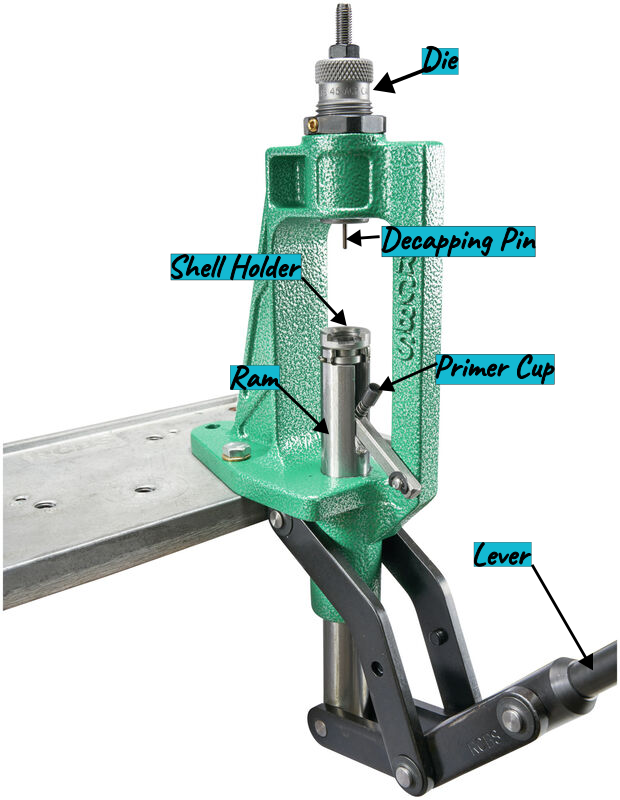There are only a couple of reasons to reload:
- You can’t find the cartridge you want
- You want to save money
- You want to improve your rifle/ammunition’s capability
- You want to have another skill
If you want to step up and improve your weapon system’s capabilities, I’m the wrong person to be listening to. I reload for cost and availability.
WARNING never trust random internet information on reloading! Always use trusted sources. Those are printed (modern) reloading manuals and the manufacturer’s published reloading tables.
Don’t trust me. If you make a mistake or copy a mistake from me, you can kill yourself or others. You can break your firearm. Don’t trust the web in this!
You will need some equipment before you can start.
- Reloading manual(s)
- Reloading Press
- Scale that reads in grains
- Calibers that read in inches
- Priming tool (on press or off)
- Dies
- Loading Trays
- Powder Funnel
- Trickler
For your first press, you should get a single stage press. The only consideration in which of the many you get is that you should get one that allows you to quickly change dies. It will improve your life.
So which single stage press should you get? The blunt answer is that at this point, it really doesn’t matter. Lee will be the lowest cost, but RCBS, Lyman, Hornady all make great single stage presses. On my wish list is a Foster Co-AX single stage press.
Figure on spending around $200 for your press.
Your scale is what keeps you safe. I have four or five different scales. I would get one of the good mechanical scales AND a digital scale. The mechanical scales work regardless of power and are very accurate. They can actually tell you more than a digital scale. The downside is that they can be slower than a digital scale and might require some practice to read.
For perspective, I’ve not used my mechanical scale in years. I still have it as a backup.
Keep with the name brands on your scale. Lee, Frankford Arsenal, Lyman, RCBS, Hornady are all good names. Of course, there are more expensive, high-quality scales available.
In looking at Amazon offerings, I found a scale that claims to be 0.1gr(ain) accuracy. But the actual accuracy is plus or minus 0.3gr. That means that it could tell you that you had a powder charge of 4.7gr, and it could actually be as high ad 5.0gr or as low as 4.4gr. That 0.6gr movement can be the difference between safe and dangerous.
You will also need a set of 6 inch calibers to read the lengths of cases and cartridges.
Here I strongly suggest dial calipers. Digital calibers can be great if you pay for great. If you aren’t paying for great, you are unlikely to get the reliability and usability you require. Starrett and Mitutoya are top of the line, and you can’t go wrong with them. Fowler is also a known good brand.
I’ve heard good things about Accusize. My reloading calipers are made by Grizzly.
Figure $25 to $125
You will need a way to install primers. Most presses have an on the press option. If you can, pay for this option. There are times when you will need the control and leverage of the press. I have multiple systems. I have a Frankford Arsenal hand priming tool. For me, the advantage of doing it manually while being with my family was the selling point. On the other hand, I used the on press priming tool for almost all of my 5.56 because I was having issues.
You will need a set of dies for each caliber you are reloading. You will need a way of getting powder into each case as well.
For organizational reasons and safety, having reloading trays that match the caliber you are reloading is another requirement, in my mind.
In addition to all of the above, you are going to want (not need, at least at first), brass processing tools, brass cleaning tools, gauges, small paint brushes, wrenches, and a host of other things. This is just the equipment you need to load your first cartridges.
Like this:
Like Loading...




